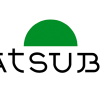Imagine Buying Bitcoin at 20 cents! This week’s newsletter links to a discussion about routed coinswaps and includes our regular sections with summaries of questions and answers from the Bitcoin Stack Exchange, releases and release candidates, and notable changes to popular Bitcoin infrastructure software. A related Stack Exchange question this month also summarizes two options for working with signet. Stack Exchange user Darius asks about the interplay between UTXO selection and feerate when constructing a transaction. Wall Street Memes Enters Last Day of Presale Before Tier 1 Exchange Listing – Could This Be the Next Big Meme Coin? Murch provides an overview of the effective value approach to coin selection, consideration of change avoidance, and attention to signature length. 0 (the default value): fee calculations are made using both coin selection algorithms. This has led some LN implementations to use route-finding algorithms that optimize for routes with low CLTV expiry deltas, which has in turn led some users to set their deltas to values that are especially unsafe.
785 updates the minimum CLTV expiry delta to 18 blocks. This new minimum should help prevent inexperienced users from naively setting an unsafe value. Modularity would allow users more flexibility in their setups and developers maintainability and security benefits. This new major version allows accepting large channels (by default, this is off) and contains numerous improvements to its backend features that may be of interest to advanced users (see the release notes). While Major Cryptos Face Challenges, Sensei Inu’s Presale Strategy Gains Attention. Anchor outputs also provide greater security because, if feerates do increase beyond what was predicted, the node can fee bump its commitment transaction. The standardization of these preimage fields was found to be necessary for miniscript-aware finalizers, though they can be used by any PSBT finalizer needing to satisfy hash preimage challenges (e.g. for onchain LN commitment transactions). With this change, it becomes possible to fee bump commitment transactions that may have been signed days or weeks earlier, when the current feerates would’ve been hard to predict. This extends commitment transactions with two extra outputs-one for each counterparty-which can be used for Child Pays For Parent (CPFP) fee bumping. 3954 updates both the fundpsbt and utxopsbt RPCs so that they can each take a locktime parameter that specifies the nLockTime of the transaction to create.
0: partial spend avoidance is used whenever the maximum additional cost it adds to the transaction is the passed amount. ● What’s the most efficient way to create a raw transaction with a specific fee rate? 19550 adds a new getindexinfo RPC that lists each optional index that has been enabled, how many blocks have been indexed so far, and whether those blocks constitute syncing all the way to the tip of the block chain. Various degrees of support for anchor outputs have already been merged into several LN implementations. 688 adds support for anchor outputs to the LN specification. In practice, LN nodes using anchor outputs should normally pay lower fees because there’s no longer any incentive to overestimate fees. 6), but it may result in slightly higher fees due to spending all inputs received to the same address when only a subset of those inputs might be needed.
As the bear market continues to linger, several market analysts have pointed out key metrics or factors that show that the Bitcoin bull market might not be far off. Or do we not need a testnet reset once we have Signet? Michael Folkson explains the considerations involving a potential testnet reset or introduction of a new signet network. Michael Folkson outlines the benefits of Russell Yanofsky’s efforts to separate Bitcoin Core into different bitcoin-node, bitcoin-wallet, and bitcoin-gui processes. ● What is the motivation for separating Bitcoin Core into independent node, wallet, and GUI processes? ● LND 0.11.0-beta is now released. ● Will there be a testnet4? To ensure that the latest state is recorded onchain, a channel should be unilaterally closed when there are only this many blocks until an LN payment has to be settled. However, the higher the expiry is, the more time a payment could become temporarily stuck in an open channel (either by accident or deliberately). Discussion was still ongoing at the time of this writing. 19743 add a new maxapsfee (“max avoid partial spends fee”) configuration option to specify the maximum amount of extra fee you’re willing to pay to avoid partial spends when the existing avoidpartialspends configuration option is disabled.





